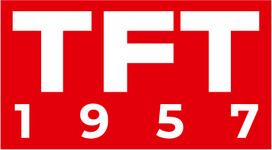
The FUJINON Duvo HZK24-300mm T2.9-T4.2 is a cutting-edge dual-format zoom lens engineered by Fujifilm.
It bridges the gap between cinematic quality and broadcast functionality, making it an excellent choice for professionals in various shooting scenarios, including sports, live events, documentaries, and high-end film production. This analysis delves into its technical specifications, unique features, performance metrics, and comparison with competitive lenses.
 Technical Specifications
Technical Specifications
- Focal Length: 24-300mm (36-450mm with 1.5x extender)
- Maximum Aperture: T2.9 (up to T4.2 at 300mm)
- Lens Mount: PL
- Image Circle: Ø28.5mm (41.3mm with extender)
- Minimum Focus Distance: 34.6 inches (87.9 cm)
- Weight: 6.5 lbs (2.95 kg)
- Zoom Ratio: 12.5x
- Aperture Blades: 9
- Front Diameter: 114mm
Key Features and Innovations
- Dual-Format Coverage: The Duvo HZK24-300mm features a built-in 1.5x extender, allowing it to cover both Super 35mm and full-frame sensors. This flexibility is crucial for filmmakers who need to switch between different camera systems without changing lenses.

- Cinematic and Broadcast Versatility: This lens incorporates technology from Fujifilm’s Premier and Premista cinema zoom series, offering a cinematic aesthetic with the operational efficiency required for broadcast environments. Its native PL mount ensures compatibility with high-end cinema cameras.
- Optical Performance:
- Sharpness: The Duvo HZK24-300mm maintains excellent sharpness across its zoom range. It’s particularly sharp at wider and mid-focal lengths when used wide open at T2.9, with only slight sharpness reduction beyond 150mm.
- Lens Breathing Compensation: The lens includes Breathing Compensation Technology (BCT), which minimizes focus breathing, a common issue in zoom lenses that can affect image consistency during focus pulls.
- Flare and Chromatic Aberration: Thanks to modern lens coatings, the lens handles flare well and exhibits minimal chromatic aberration, even in high-contrast or backlit conditions.
- Ergonomics and Build Quality: Weighing just 6.5 lbs, the lens is designed for both handheld and mounted use. It includes a Digital Full-Servo Drive unit, making it suitable for various shooting setups from manual operation to remote-controlled systems.

- Advanced Technological Integrations:
- Automatic Restoration of Illumination Attenuation (ARIA): This feature ensures even illumination across the image, which is particularly useful in broadcast scenarios.
- Metadata Support: The lens supports Cooke /i and ZEISS eXtended Data protocols, providing valuable lens metadata for VFX and post-production.
- Remote Back Focus (RBF): Allows the flange focal distance to be controlled remotely, facilitating quick adjustments on set.
Performance Analysis
- Sharpness and Clarity: The lens delivers impressive sharpness across its zoom range. At T2.9, it performs exceptionally well at shorter focal lengths and maintains good performance up to 300mm, with a slight drop in sharpness beyond 150mm. When stopped down to T5.6 or T8, the sharpness is uniform across the frame.

- Color Rendition and Contrast: The Duvo HZK24-300mm has a neutral color tone with a slight cool bias, consistent with other FUJINON lenses. It maintains good contrast in various lighting conditions, ensuring vibrant and accurate colors in both cinematic and broadcast environments.
- Bokeh Quality: The nine-blade iris creates pleasing, circular bokeh, enhancing the aesthetic quality of out-of-focus areas. This feature is essential for creating a cinematic look with a shallow depth of field.

- Lens Flare and Chromatic Aberration: Modern coatings and optical design significantly reduce lens flare and chromatic aberration. These characteristics ensure high image quality even in challenging shooting conditions, such as strong backlighting or high-contrast scenes.
Comparison with Competitors
-
- Canon CN-E 20-50mm T2.4 L F/FP and CN-E 45-135mm T2.4 L F/FP: These new lenses from Canon are designed for full-frame sensors and offer fast apertures. However, they do not feature a built-in extender and are heavier compared to the FUJINON Duvo HZK24-300mm.

- Angénieux Optimo Ultra 12X: Known for its exceptional optical quality, this lens covers a similar focal range and is designed for full-frame sensors. It is significantly heavier and more expensive, making it less practical for handheld or quick setup changes.

- Canon CN-E 20-50mm T2.4 L F/FP and CN-E 45-135mm T2.4 L F/FP: These new lenses from Canon are designed for full-frame sensors and offer fast apertures. However, they do not feature a built-in extender and are heavier compared to the FUJINON Duvo HZK24-300mm.
-
- Laowa Ranger 28-75mm T2.9 FF and 75-180mm T2.9 FF: These compact cine zooms are more affordable but offer a shorter focal length range. They are suitable for full-frame sensors but lack the dual-format capability and some advanced features of the FUJINON Duvo.

- Laowa Ranger 28-75mm T2.9 FF and 75-180mm T2.9 FF: These compact cine zooms are more affordable but offer a shorter focal length range. They are suitable for full-frame sensors but lack the dual-format capability and some advanced features of the FUJINON Duvo.
The FUJINON Duvo HZK24-300mm T2.9-T4.2 lens is a versatile, high-performance lens that stands out in both cinematic and broadcast applications. Its dual-format coverage, sharp optical performance, advanced technological features, and ergonomic design make it a valuable tool for professionals. Compared to competitors, it offers a balanced mix of quality, flexibility, and practicality, making it an excellent investment for a wide range of shooting scenarios.


 Technical Specifications
Technical Specifications













